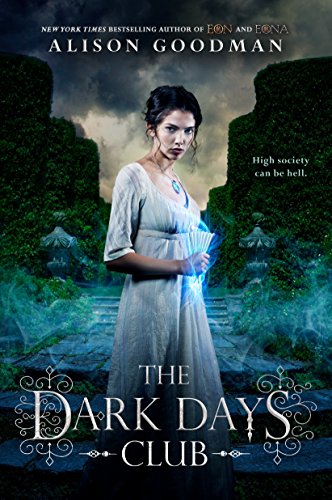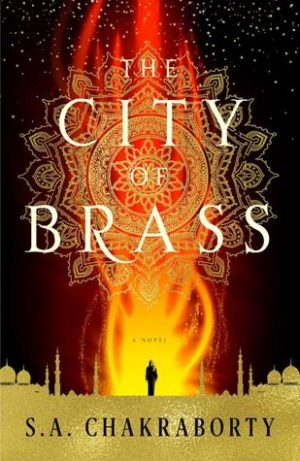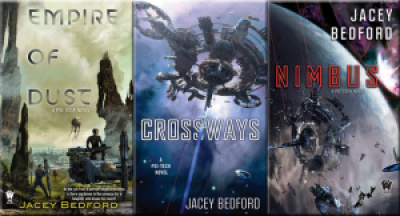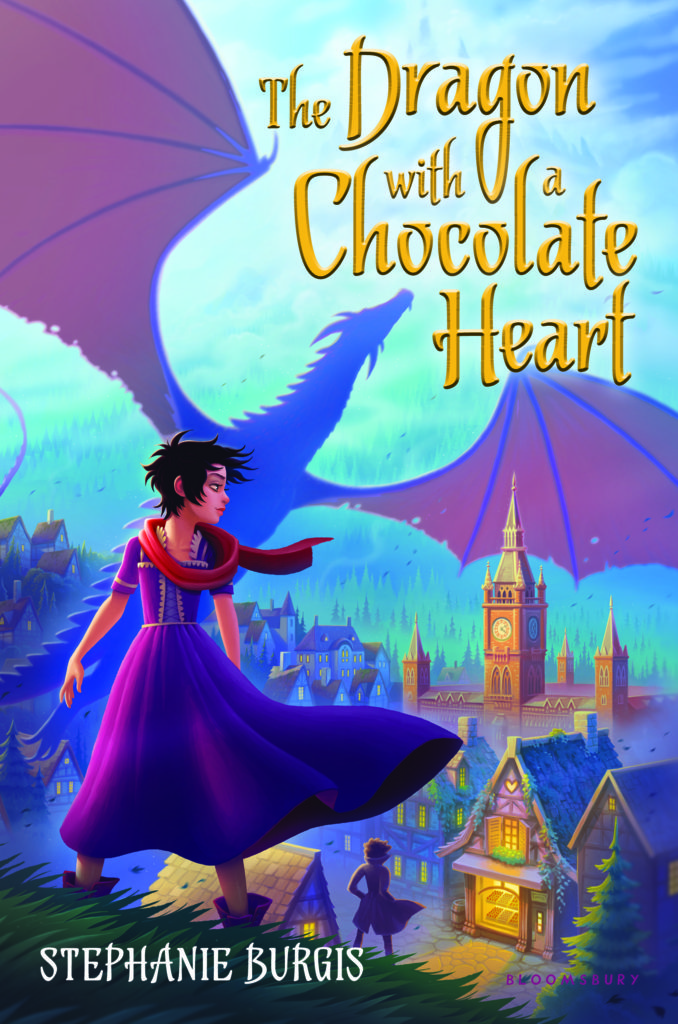Month of Joy: The Order of the Air by Trish Matson

Last month, I reread the five existing books of The Order of the Air series by Melissa Scott and Jo Graham. These are some of my favorite comfort reads. Parts of these period adventure-fantasies are very cozy, but aside from the wonderful characters’ mutual support, love, and humor, there are also some tense and exciting action sequences, with almost ordinary people teaming up to resist evil and try to make the world better.
Book Review: The Dark Days Club by Alison Goodman

If you ever thought Jane Austen needed more demon hunting, The Dark Days Club by Alison Goodman is the book for you. In Regency London, Lady Helen Wrexhall is preparing for her presentation to the queen. Her parents died under mysterious circumstances no one talks about except to mention the shame Lady Helen’s mother brought to the family. This means that Lady Helen must be a paragon in order to avoid the stain of such an association and marry well. Which makes it very inconvenient when she starts to manifest unusual abilities. Having grown up being able to read the tiniest signs of emotion in people’s faces, she starts to find herself filled with a restless energy. When one of her family’s housemaids goes missing, Lady Helen sets out to investigate. She finds herself drawn into a shadowy side of the world she never knew existed and to the Earl of Carleston. Through him she learns the truth of her abilities and must choose between her duty to her country and her desire to lead a normal life.
Book Review: City of Brass by S.A. Chakraborty

City of Brass by S.A. Chakraborty is as elusive and complicated as its main character, Nahiri. When we meet Nahiri, it is 18th century Cairo under tenuous French control. She lives in a poor section of the city, not far from the Necropolis. She’s a healer, a con artist, and a thief who is willing to rob places while the owners are away. And yet she has power and ability she herself does not quite understand, a nature that is fragile as is her position. This sets up the novel starting off, anyway, as a historical fantasy, a historical urban fantasy at that. The novel switches gears, however, when Nahiri accidentally summons a djinn. Soon on the run, Nahiri and the djinn, Dara, are traveling across the Middle East to a hidden city of the djinn, Daevabad. There, they encounter Prince Ali, already chafing under the reign of his father and the future reign of his brother, and a city on the edge of change, or destruction. We get intrigue, political agitation, ancient secrets and much more within the bounds of the city.
Guest Post: Things I Wish I Knew When I Started – Thoughts on Finishing a Trilogy by Jacey Bedford

I committed trilogy accidentally—twice! It all started back in 2013 when I sold my first book to DAW and on the back of that sale was offered a three book deal for EMPIRE OF DUST (science fiction), WINTERWOOD (fantasy), and a sequel to Empire, CROSSWAYS (sold on the basis of a one page synopsis). Wow, it was the offer of my dreams; a fabulous speculative fiction publisher was paying me to do what I loved doing best—making up stories. In the bad-old (but fun) unpublished days, I’d made the classic mistake of starting to write a trilogy without having sold Book One, only to realise that the two years of work put into Book Two was a waste of time. I was never going to sell Book Two before I’d sold Book One. That should have been obvious, of course, but I was having such fun writing it that I never really stood back and asked myself what I was doing.
Book Review: Doctor Potter's Medicine Show by Eric Scott Fischl

The Women’s Christian Temperance Union, a real-life organization that lends a bit of background color to Doctor Potter’s Medicine Show, might have found this novel an effective bit of ammo in their arsenal against the evils of Demon Rum, Wicked Whiskey, Sinful Ginful, etc. They would probably have found it an appalling actual read, but it might have served better than their marching around with signs and their uplifting sermons and their heartfelt testimonials ever did. The descriptions of the unpleasantness of actually being drunk, of addiction, of the consequences of a drinking binge (both social and biological), and of just how nasty a bottle of rotgut can taste and smell, will surely make many a reader look askance at the next cocktail proffered him or her.* I doubt, though, that Eric Scott Fischl wrote with this aim in mind as he brought these desperate characters together in this diabolical plot. After all, alcohol is not anyone’s biggest problem in his version of Oregon and Idaho in the late 1870s.
Guest Post: Switching Between Lanes, by Stephanie Burgis

I think that every writer who’s ever read publishing advice online has probably come across at least one article on the importance of “branding.” Apparently, to be really smart, writers ought to be figuring out the one thing that they’re best at — or the one thing that connects the most with potential readers — and then sticking to it no matter what, so that fans will know exactly what they’ll get from every new novel by that author. I know I sound a little snarky in that description, but I’m actually not arguing with it as a strategy. I’m sure that it is a smart, practical way to build a successful career. Unfortunately, I’ve never been much good at sticking to my own lane. There are too many wonderful genres that I love as a reader, and I get frustrated whenever I try to shut out all but one of them in my writing life. Before I sold my first books, I published dozens of adult f/sf short stories, and I drafted full-length novels for both adults and kids. Then my first agent, back in 2005, took me on with an adult historical fantasy manuscript, and it felt like my first big step onto the publishing ladder. Aha! I’m almost there!

